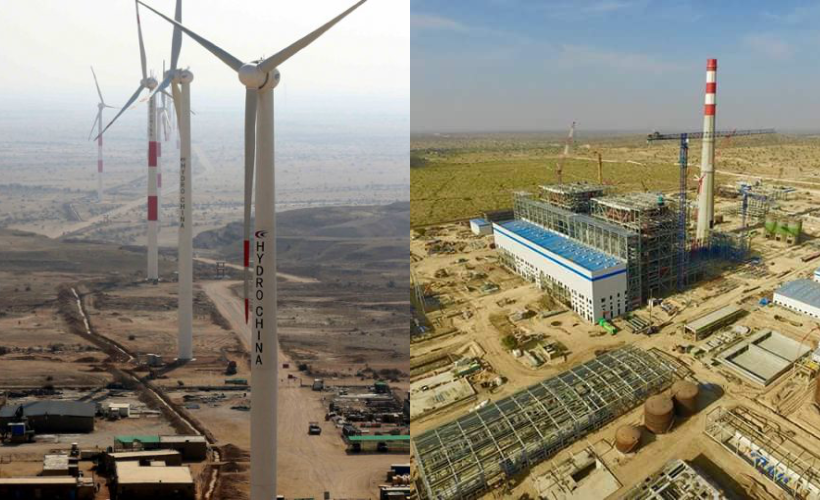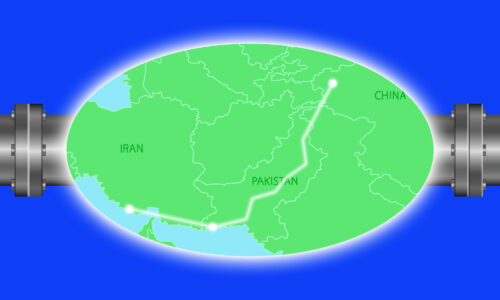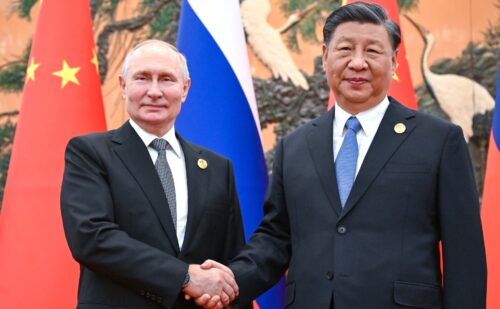Op-ed: How to make China’s Belt and Road green

Pictured: Two BRI projects in Pakistan represent the contradictory environmental effects of Chinese investment: Left, the Sachal Energy Wind Farm; right, the Thar Engro Coal Power Project.
President Xi Jinping has declared China’s trillion-dollar infrastructure program should be “clean and green.” Why isn’t it, yet? Elizabeth Losos and Erik Myxter-iino suggest two concrete ways to ensure that Belt and Road investment prioritizes environmental protection.
On April 25-27, Chinese leaders met in Beijing with heads of state and delegations from more than 40 countries to discuss next steps in implementing the Belt and Road Initiative (BRI), China’s $1 trillion infrastructure investment program.
An important focus of this year’s forum was sustainability. The word “green” was noticeably more prominent in the drafting of the joint communique, and President Xi Jinping gave a high-profile address in which he declared that BRI investment should be “open, green and clean.”
Xi felt the need to emphasize this point because, though infrastructure investments are badly needed across the developing world, poorly planned and debt-laden BRI infrastructure projects to date have drawn the world’s attention to the economic, environmental, and social risks of BRI.
Since BRI’s launch in 2013, the government of China has pledged to create infrastructure investments that will promote ecological protection, climate stability, and attainment of the world’s Sustainable Development Goals. In its first five years, the BRI has included many such projects, like the Sachal Wind Farm in Pakistan and Argentina’s Cauchari Solar Park.
These environmentally positive BRI renewable energy projects, however, have been overshadowed by such troubling projects as dams in Indonesia that threaten the extinction of Tapanuli orangutans, diminish local livelihoods, and force communities to resettle; coal projects that increase carbon emissions abroad, even as China makes emissions reduction strides at home; and transportation projects that open up frontier forests to settlements.
Why is China’s stated intention of creating a “Green BRI” not being realized on the ground? While BRI projects are often portrayed as a centrally planned mandate from Beijing, the reality is much more complicated. Many of the 3,000-plus projects linked to BRI stem from decentralized discussions between state-owned enterprises in China and host country counterparts. The state-owned enterprises act more autonomously than commonly believed, research has shown. And far from being centrally commissioned, since 2014 Chinese companies need no approval from the National Development and Reform Commission in Beijing for the vast majority of their overseas projects, except for the very small number worth more than $1 billion.
The task of making BRI green is daunting, but the tools exist for China to take on this challenge. To do so, China needs to take two steps to make BRI investments environmentally sensitive and sustainable.
First, China should ensure that the environmental impacts of its projects are considered by funders at the earliest stages of the investment process. Presently, environmental and social risks are not taken into account until the very end of the project cycle, if at all. At this late stage, significant changes are rarely possible because of the extensive financial and political capital already invested.
By comparison, if China worked with host country governments and civil society to carry out environmental assessments at the earliest stages in conjunction with BRI economic strategic planning, projects can be selected that avoid environmental and social damage, often at little economic cost.
China has taken some initial steps in this direction. The environment ministry has started a BRI early-stage environmental assessment process with Southeast Asian governments. Additionally, another agency will soon launch a big environmental data platform that will improve China’s “upstream” planning capabilities. These are excellent first steps, but need to be expanded to empower appropriate ministries to use their early-stage planning to direct and, if necessary, restrict BRI investments.
Second, China should ensure that its state-owned insurance company and policy banks greenlight only projects that pass an environmental and social review. Because every Chinese company that wants to obtain financing for a BRI project must first obtain political risk insurance, the single company that provides this insurance, Sinosure, is in an ideal position to scrutinize and act on environmental and social risks prior to project financing. Sinosure has a risk-assessment scale to help direct its lending, but as best we can tell from public documentation, it doesn’t include environmental or social considerations — political risk is by far the most important factor that Sinosure considers. This could be remedied by providing Sinosure with an index that identifies environmental risks such as lack of climate resilience, biodiversity loss, deforestation and social unrest — all issues that can undermine the success of a project.
Even more stringent requirements could also be instituted by the two dominant lending agencies for BRI projects, the Export-Import Bank of China and China Development Bank. To date, these funders have relied on limited environmental and social safeguards that fall well short of standards used by the World Bank and others.
If China were to take these two steps, it could become a true global leader in sustainable development.
Elizabeth Losos, senior fellow, Nicholas Institute for Environmental Policy Solutions, Duke University
Erik Myxter-Iino, graduate student, School of Public and International Affairs, North Carolina State University





